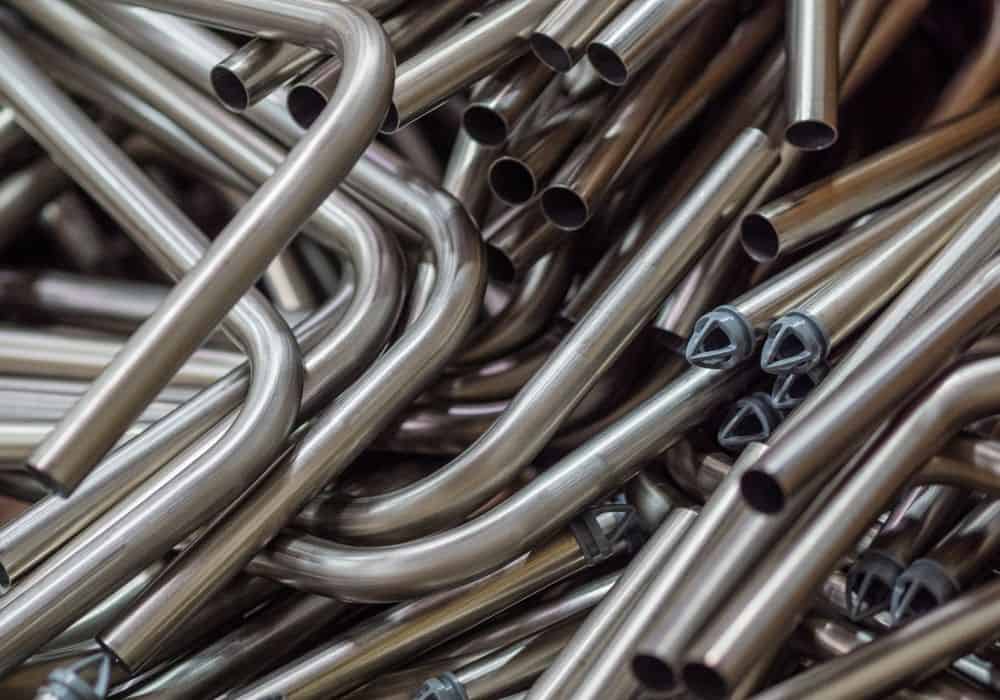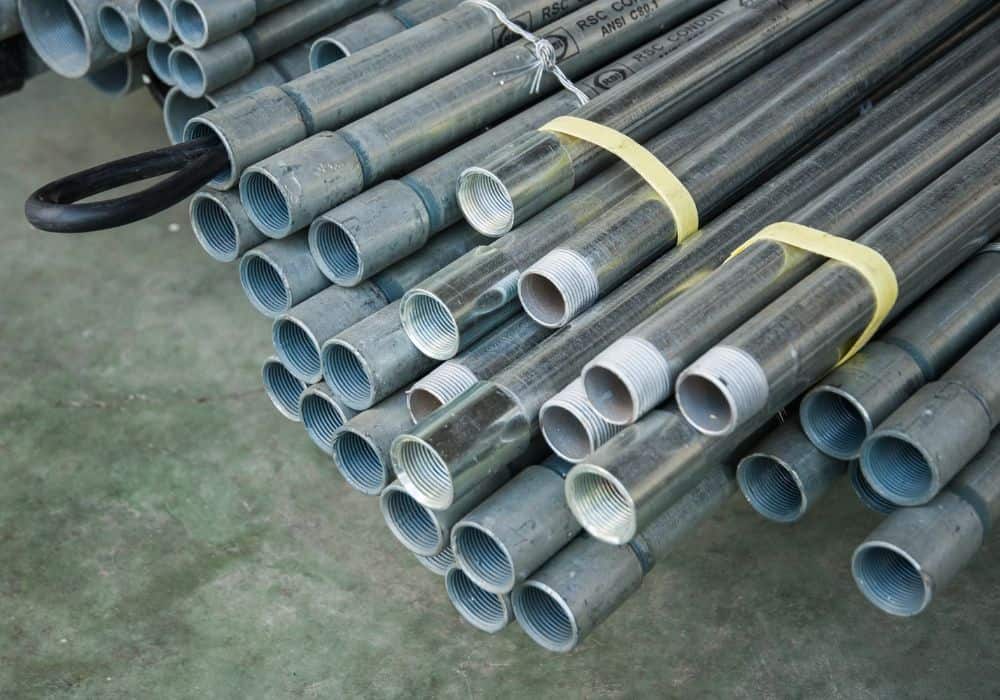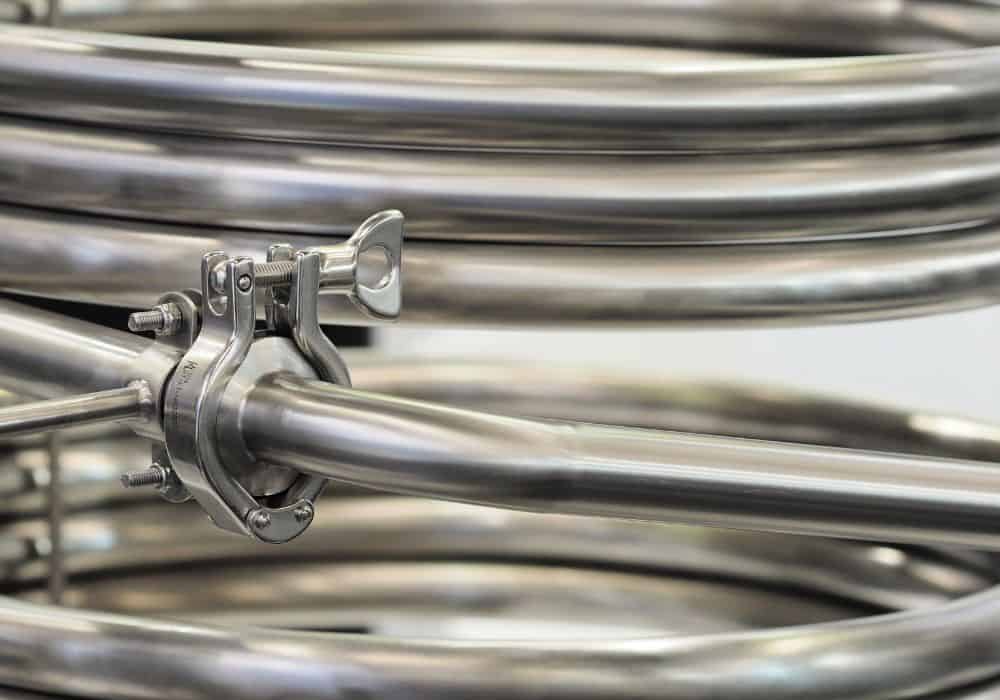As a homeowner, you may need to cut stainless steel pipe from time to time. This can be a daunting task, especially if you’ve never done it before. It’s because stainless steel pipes are crafted for corrosion resistance and durability, making them difficult to cut.
But don’t worry! With the right tools and a little bit of know-how, you can cut stainless steel pipe like a pro. In this article, we’ll show you how to cut stainless steel pipe so that you can get the job done quickly and easily.
Tools You’ll Need To Cut Stainless Steel Pipe:
- Marker/Chalk/Pencil (To Mark the Cut)
- Meter Stick/Ruler (To Measure the Pipe)
- Angle Grinder/Steel Pipe Cutter/Chop Saw/Circular Saw/Band Saw/Jigsaw/Hacksaw, Plasma Cutter)
- Belt Grinder/File – To Deburr the Pipe
- Safety Gear (Gloves, Eye Protection, Ear Protection)
Step-by-Step Guide: How to Cut Stainless Steel Pipe

Step 1: Measure the Pipe
The first step is to measure the pipe. You’ll need to know the length of the pipe so that you can cut it to the correct size.
Once you have the measurements, mark the pipe with a pencil or marker. Make sure the marks are visible and easy to see, so you know exactly where the cut has to be made.
Step 2: Select Your Tool of Choice
Now that you’ve marked the pipe, it’s time to choose the right tool for the job. There are many different tools that you can use to cut a stainless steel pipe. Each of them has its own pros and cons, but all of them can be used to do the job:
- Angle Grinder
An angle grinder is a tool that can be used for many jobs, including grinding, polishing, and cutting metal. It’s also one of the cheapest options around, albeit you’ll have to spend some money on a diamond disc that’s capable of cutting stainless steel pipe.
- Steel Pipe Cutter
A pipe cutter is a tool that’s specifically designed for cutting pipes. It’s easy to use and it will produce clean, precise cuts. However, it can be difficult to find a tube cutter that’s the right size for your pipe.
Additionally, you must ensure that you’re using a pipe cutter that’s capable of cutting stainless steel pipes.
- Chop Saw
A chop saw is a type of saw that can make quick, clean cuts in metal. It’s a good choice for cutting stainless steel pipe because it will produce fewer sparks than other types of saws. However, chop saws can be expensive and they aren’t the safest option to use.
- Circular Saw
A circular saw is another option for cutting stainless steel pipe. It’s less expensive than a chop saw but more difficult to use. It will also produce more sparks than a chop saw, and you’ll need a firm grip to control it properly for a clean cut.
- Band Saw
A band saw is a type of saw that uses a continuous loop of the blade to cut through metal. There are two main types of band saws. One is handheld, which is much cheaper and portable, and the other is a benchtop bandsaw, which isn’t as portable and is much more expensive.
If you only need to cut a few pipes, getting a portable band saw could be a good choice, because it’s great at cutting metal, including stainless steel, is relatively easy to use, and doesn’t require much experience to get clean cuts really quickly.
Jigsaw: A jigsaw is another option for cutting stainless steel pipe. It’s less expensive than a band saw and it’s relatively easy to use. However, it will produce more sparks than a band saw.
Hacksaw: A hacksaw is a type of saw that’s specifically designed for cutting metal. It’s relatively easy to use and it will produce clean cuts. However, it can be difficult to find a hacksaw that’s the right size for your pipe.
- Plasma Cutter
A plasma cutter is a type of cutter that uses a plasma torch to cut through metal. It’s a good choice for cutting stainless steel pipe because it’s fast and will produce clean cuts. However, plasma cutters are very expensive and they’re not always easy to use.
We don’t recommend you get a plasma cutter just if you need to cut a couple of stainless steel pipes at home.

Step 3: Put On the Safety Gear
Before you start cutting the pipe, it’s important to put on the proper safety gear. This includes gloves, eye protection, and ear protection. Regardless of the cutting tool of your choice, there’s going to be sparks or debris flying around, and you don’t want it to get into your eyes.
Some tools also produce loud noise which can hurt your ears, so wearing appropriate ear protection is a must.
Step 4: Cut the Pipe
Once you’ve chosen the right tool for the job, it’s time to cut the pipe.
- Using an Angle Grinder
If you’re using an angle grinder, make sure to position the disc perpendicular to the pipe, and start cutting while maintaining a consistent downwards pressure. That said, don’t try to force the disc through the pipe, as this can cause the disc to break.
- Using a Pipe Cutter
If you’re using a pipe cutter, insert the pipe into it, and tighten the end of the tool so it’s snug. Then, start rotating the cutter or the pipe itself, continuously tightening the end of the tool to apply more and more pressure. Repeat the rotations until the pipe is cut.
Here’s a short video showing how to use a pipe cutter.
- Using a Chop Saw
First, make sure the blade is in the correct position, and then turn on the saw. Slowly lower the blade into the pipe and let it do its work. The pipe will be cut in seconds.
- Using a Band Saw
If you’re using a handheld band saw, simply position its blade at the marked cut line on the pipe. Then, turn on the tool and apply downward pressure until the pipe is cut.
If you’re using a benchtop band saw, follow the manufacturer’s instructions to set it up. Then, make sure the blade is in the correct position, and turn on the saw. Finally, slowly guide the pipe through the blade until it’s cut.
- Using a Jigsaw
With a handheld jigsaw, position its blade at the cutting line, and turn it on. Apply some pressure forwards and downwards while guiding the blade through the pipe until it’s cut.
- Using a Plasma Cutter
If you’re using a plasma cutter, make sure the torch is in the correct position, and then turn on the cutter. Slowly guide the torch through the pipe along the cutting mark. If required, turn off the plasma cutter and rotate the pipe, so the other side of the cutting line is visible.
Step 5: Deburr the Pipe
After you’ve cut the pipe, you’ll need to remove any sharp edges. This is called deburring. There are many ways to do it, but the two most common ways are to use use a belt grinder or a file.
Belt grinders are the quickest and easiest way to deburr a pipe. However, they can be expensive. If you already own one and want to use it for deburring, simply turn it on and guide the cut end of the pipe along the running belt, removing the burr.
Files are a cheaper alternative, but they’re more time-consuming. Using it to remove the burrs is straightforward, simply start filing them away, until you’re satisfied with the result.
Step 6: Clean the Pipe and Workspace
Now that the pipe is cut and deburred, it’s time to clean it and the workspace. First, remove all the metal shavings and debris from the workspace. A vacuum cleaner is preferred, but you can also use a broom. Then, use a clean cloth to wipe down the pipe and remove any residue.
Extended Tips For Cutting Stainless Steel Pipe

Here are some extended tips that will help you get the best results when cutting stainless steel pipe:
- If you’re not going to use the pipe right away, you should store it in a dry, protected place
- You should regularly inspect the installed pipe for any signs of damage.
- If you’re having trouble cutting the pipe, you can try heating it up with a torch. This will make the metal easier to cut.
- Regardless of which cutting tool you’ve chosen for the task, make sure you’re using appropriate blades that are rated for cutting stainless steel.
Conclusion
If you need to cut stainless steel pipe, you can do it yourself with the right tools and patience. To do it, follow these steps:
- Measure the pipe and mark it with a pencil or marker
- Choose the right tool for the job
- Put on the safety gear
- Follow the manufacturer’s instructions to cut the pipe
- Deburr the pipe with a belt grinder or a file.
- Clean the workspace
And that’s it! You’ve successfully cut a stainless steel pipe. If you have any other questions, let us know in the comment section!
